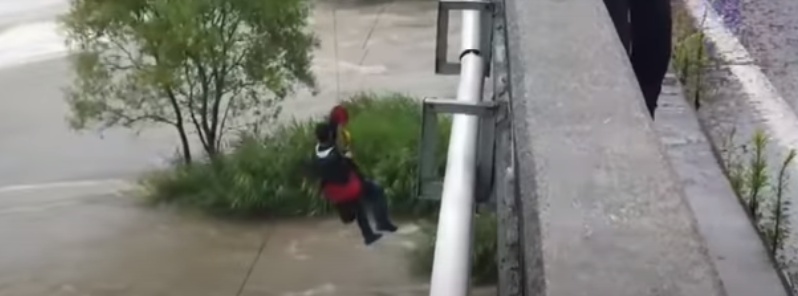More than a month’s worth of rain in 24 hours hits South Korea, causing deadly flooding

South Korea's southern regions were battered by torrential rains on Monday, July 13, 2020, leaving several people dead, damaging houses and properties, and causing widespread flooding. In Sancheong County, about 277 mm (11 inches) of rain fell in 24 hours, which was more than the average rainfall of 241 mm (9.5 inches) for the entire month of July.
According to the Korea Meteorological Administration, other areas also recorded high rainfall totals in a 24-hour period to Monday: Buan in North Jeolla Province registered 228 mm (9 inches) and Geoje in South Gyeongsang with 210 mm (8 inches).
In Hamyang, a farmer and an excavator engineer lost their lives after being swept away by flash flooding while doing irrigation-ditch repair work. Meanwhile, two men, both around 50 years of age, were rescued after they fell in a river while fishing in Hapcheon.
Roads were blocked as floods and landslides occurred in parts of the province. Several homes were damaged, including in the large port city of Busan.
Southwestern coasts, Incheon, and five Yellow Sea islands near the North Korean border were put under a strong wind advisory.



In Daegu, a 64-year-old man died after falling off a cliff while descending a mountain amid the harsh weather on Sunday afternoon, July 12.
Meanwhile, a pileup of five vehicles– including a cargo truck and an SUV– occurred on a portion of the Seoul-Busan expressway in Anseong, Gyeonggi Province. As a result, the SUV driver was killed and two people were injured, including the truck driver.
In a separate accident, an SUV crashed into a guardrail on the Namhae Expressway after skidding on a slippery road. No casualties were reported, but it led to traffic congestion.
Many houses and farming facilities sustained damage.


"The rainy season began on Jeju Island on June 10 and in the southern and central regions on June 24," a KMA official said.
"Generally, the wet season ends in those areas in late July, though the exact period differs from region to region. The current pressure chart indicates the previous pattern is expected to repeat this year."
Featured image credit: YTN (still shot)

Commenting rules and guidelines
We value the thoughts and opinions of our readers and welcome healthy discussions on our website. In order to maintain a respectful and positive community, we ask that all commenters follow these rules.